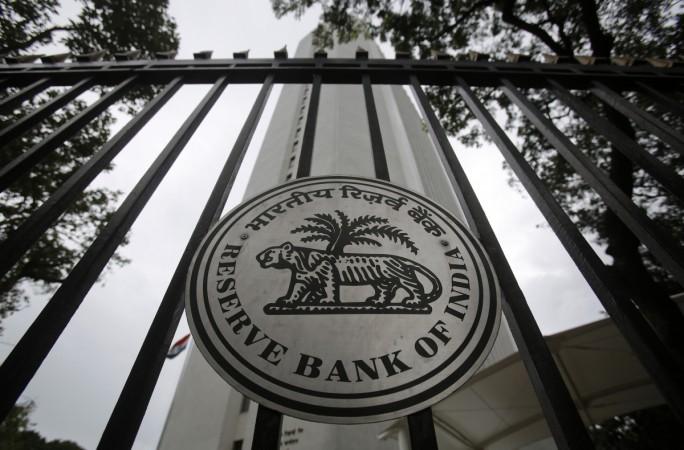
At its first meeting, the six-member Monetary Policy Committee (MPC) announced a 25 basis point cut in the repo rate to 6.25 percent, which saw a muted response by the stock markets. As a result, the reverse repo rate stands reduced to 5.75 percent, the Reserve Bank of India (RBI) said on Tuesday afternoon.
"The decision of the MPC is consistent with an accommodative stance of monetary policy in consonance with the objective of achieving consumer price index (CPI) inflation at 5 percent by Q4 of 2016-17 and the medium-term target of 4 percent within a band of +/- 2 percent, while supporting growth," the RBI said in its official statement.
It's for the first time that the repo rate has been finalised by a panel instead of the usual practice of the RBI governor taking the decision, based on inputs from the bank's international departments.
Taking note of the normal monsoon during the June-September period, the MPC said the uptick in sowing activity and supply management measures should ensure a fall in food inflation and consequently overall inflation.
It also said that the salary arrears to Central government employees will drive urban consumption.
The next meeting of the MPC will be held on December 6 and 7, 2016 and its resolution will be announced on December 7, 2016.
Here are the highlights of the MPC decision as announced by the RBI:
- Global growth has been slowing more than anticipated through 2016 so far, with weak investment and trade damping aggregate demand. Meanwhile, risks in the form of Brexit, banking stress in Europe, rebalancing of debt-fuelled growth in China, rising protectionism and diminishing confidence in monetary policy have slanted the outlook to the downside.
- World trade volume has contracted sharper than expected in the first half of 2016, and the outlook has worsened with the recent falling off of imports by advanced economies (AEs) from emerging market economies (EMEs). Inflation remains subdued in AEs and has started to edge down in EMEs. 3. International financial markets were overwhelmed by the Brexit vote in Q2, with equity markets losing valuations worldwide, currencies plunging and turning volatile, and investors rushing for safe havens.
- Markets, however, recovered quickly and reclaimed lost ground in Q3, with a return of risk appetite propelling capital flows back into EMEs. Nonetheless, an uneasy calm prevails on uncertainty about the stance of monetary policy of systemic central banks. Commodity prices have firmed up slightly, easing stress for commodity exporters and shaving off some of the terms of trade gains accruing to commodity importers. Crude prices rose to a recent peak in Q2 of 2016, mostly on supply disruption in various parts of the world, and again in late September as the OPEC announced intentions of cutting back on supply; but, the upturn has been curbed by higher inventories.
- On the domestic front, the outlook for agricultural activity has brightened considerably. The south west monsoon ended the season with a cumulative deficit of only 3 per cent below the long period average, with 85 per cent of the country's geographical area having received normal to excess precipitation. Kharif sowing has surpassed last year's acreage, barring cotton, sugarcane and jute and mesta. Accordingly, the first advance 2 estimates of kharif foodgrains production for 2016-17 by the Ministry of Agriculture have been placed at a record level, and higher than the target set for the year.
- The industrial sector, by contrast, suffered a manufacturing-driven contraction in early fiscal year Q2, after a sequential deceleration in gross value added in Q1. Even after trimming the statistical effects of the lumpy and order-driven contraction of insulated rubber cables, industrial production as measured by the index of industrial production (IIP) turned out to be slower than a year ago. In August, steel production rose to a 37-month high and cement production maintained momentum - auguring well for construction activity - even though the output of core industries as a whole was weighed down by a decline in the production of coal, crude oil and natural gas and deceleration in refinery products and electricity generation.
- Nonetheless, business expectations polled in the Reserve Bank's industrial outlook survey and by other agencies remain expansionary in Q2 and Q3. The strong public investment in roads, railways and inland waterways, the recent efforts to unclog cash flows in large projects under arbitration, and the boost to spending from the 7th Pay Commission's award, should improve the industrial outlook.
- In the services sector, the acceleration in the pace of activity in Q1 appears to have been sustained. An increasing number of high frequency indicators are moving into positive territory, construction is boosted by policy initiatives, and public administration, defence and other services will be supported by the pay commission award. 5. Retail inflation measured by the headline CPI had been elevated by a sharp pick-up in the momentum of food inflation overwhelming favourable base effects during April-July.
- In the external sector, merchandise exports contracted in the first two months of Q2. Subdued domestic demand was, however, reflected in a faster contraction in imports. Moreover, the still soft crude prices pared off a fifth of the oil import bill and gold import volume slumped to a fifth of its volume a year ago. Consequently, the merchandise trade deficit narrowed by US$10 billion in April-August on a year-on-year basis.









